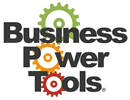How to Develop Your Company’s Positioning Statement
Now that you’ve developed your product positioning statements, you’ll want to develop similar statements for your company. A company positioning statements describe your company’s main mission in very few words. Again, you should develop both a short company positioning statement and a more comprehensive statement.
Here’s an example of a company positioning statement:
“Founded in 1982, Chet Smith Tax Services specializes in tax returns for self-employed persons who need accurate returns prepared quickly at a competitive price.”
That is fine for a ten-second pitch. An elongated form of this company positioning statement may include additional information, such as community service, awards received or educational background. For instance:
“Founded in 1982, Chet Smith Tax Services specializes in tax returns for self-employed persons who need accurate returns prepared quickly at a competitive price. A volunteer at the Senior Citizens Center, Mr. Smith prepares many returns for the disabled elderly for free. A graduate of State College, Mr. Smith holds a bachelor’s degree in accounting and is a Certified Financial Planner.”
For a company that produces products, the short company positioning statement may read:
“Founded in 1975, Healthy Products of San Francisco is a leading manufacturer of quality kitchen appliances for home and professional use.”
A more comprehensive company positioning statement may include additional information, such as specific product names, awards received or business relationships. For instance:
“Founded in 1975, Healthy Products of San Francisco is a leading manufacturer of quality kitchen appliances for home and professional use. In addition to the Juice/Blender, Healthy Products manufactures 20 other kitchen products, including the XtraWide Toaster and the Big Pizza Pan. The company is a division of EcoSensitive, of Washington, D.C.”
Organizations can create company positioning statements to help reporters and potential customers get to know them better. For example, let’s say Widget World is the leading manufacturer of widgets for the government marketplace. Reporters may not be familiar with Widget World, but if they read that Widget World is the leading producer of widgets for the government they’ll be motivated to find out more about the company. That fact should be the basis of Widget World’s company positioning statements.
As with your product positioning statements, your company positioning statements are frequently the basis for your verbal and print contact with reporters. The more you use these statements, the more they will become ingrained in people’s minds. (When people see Widget World, they will immediately think of the leading producer of widgets for the government.) You’ll want to use these statements when you talk to the press on the phone and in person, and when you write press releases. (Your full company positioning statement should be the last paragraph of every press release you write.) Your marketing department can reinforce these statements by including them in ads and direct mail materials.
Because these positioning statements are so important to the success of your company, you should give serious consideration to involving others (e.g. the marketing, sales, research and development or engineering departments) in creating the message. By inviting representatives from each major department to voice their opinions, you’ll see your company from a variety of perspectives. Also, the message you decide on will have more support within your company because each department participated in the process.
